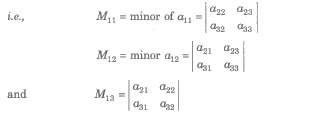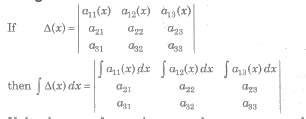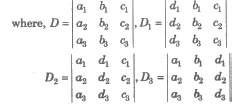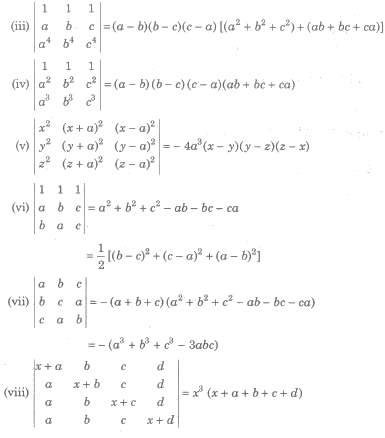-
1.Relations and Functions
11-
Revision – Functions and its Types 38 minLecture1.1
-
Revision – Functions Types 17 minLecture1.2
-
Revision – Sum Related to Relations 04 minLecture1.3
-
Revision – Sums Related to Relations, Domain and Range 22 minLecture1.4
-
Cartesian Product of Sets, Relation, Domain, Range, Inverse of Relation, Types of Relations 34 minLecture1.5
-
Functions, Intervals 39 minLecture1.6
-
Domain 01 minLecture1.7
-
Problem Based on finding Domain and Range 39 minLecture1.8
-
Types of Real function 31 minLecture1.9
-
Odd & Even Function, Composition of Function 32 minLecture1.10
-
Chapter Notes – Relations and FunctionsLecture1.11
-
-
2.Inverse Trigonometric Functions
16-
Revision – Introduction, Some Identities and Some Sums 16 minLecture2.1
-
Revision – Some Sums Related to Trigonometry Identities, trigonometry Functions Table and Its Quadrants 35 minLecture2.2
-
Revision – Trigonometrical Identities-Some important relations and Its related Sums 16 minLecture2.3
-
Revision – Sums Related to Trigonometrical Identities 18 minLecture2.4
-
Revision – Some Trigonometric Identities and its related Sums 42 minLecture2.5
-
Revision – Trigonometry Equations 44 minLecture2.6
-
Revision – Sum Based on Trigonometry Equations 08 minLecture2.7
-
Introduction to Inverse Trigonometry Function, Range, Domain, Question based on Principal Value 37 minLecture2.8
-
Property -1 of Inverse trigo function 28 minLecture2.9
-
Property -2 to 4 of Inverse trigo function 48 minLecture2.10
-
Questions based on properties of Inverse trigo function 19 minLecture2.11
-
Question based on useful substitution 27 minLecture2.12
-
Numerical problems 19 minLecture2.13
-
Numerical problems 24 minLecture2.14
-
Numerical problems , introduction to Differentiation 44 minLecture2.15
-
Chapter Notes – Inverse Trigonometric FunctionsLecture2.16
-
-
3.Matrices
9-
What is matrix 26 minLecture3.1
-
Types of matrix 28 minLecture3.2
-
Operations of matrices 28 minLecture3.3
-
Multiplication of matrices 29 minLecture3.4
-
Properties of a matrices 44 minLecture3.5
-
Numerical problems 19 minLecture3.6
-
Solution of simultaneous linear equation 28 minLecture3.7
-
Solution of simultaneous / Homogenous linear equation 24 minLecture3.8
-
Chapter Notes – MatricesLecture3.9
-
-
4.Determinants
6-
Introduction of Determinants 23 minLecture4.1
-
Properties of Determinants 29 minLecture4.2
-
Numerical problems 15 minLecture4.3
-
Numerical problems 16 minLecture4.4
-
Applications of Determinants 17 minLecture4.5
-
Chapter Notes – DeterminantsLecture4.6
-
-
5.Continuity
7-
Introduction to continuity 28 minLecture5.1
-
Numerical problems 17 minLecture5.2
-
Numerical problems 22 minLecture5.3
-
Basics of continuity 26 minLecture5.4
-
Numerical problems 17 minLecture5.5
-
Numerical problems 11 minLecture5.6
-
Chapter Notes – Continuity and DifferentiabilityLecture5.7
-
-
6.Differentiation
14-
Introduction to Differentiation 27 minLecture6.1
-
Important formula’s 29 minLecture6.2
-
Numerical problems 29 minLecture6.3
-
Numerical problems 31 minLecture6.4
-
Differentiation by using trigonometric substitution 21 minLecture6.5
-
Differentiation of implicit function 21 minLecture6.6
-
Differentiation of logarthmetic function 31 minLecture6.7
-
Differentiation of log function 25 minLecture6.8
-
Infinite series & parametric function 26 minLecture6.9
-
Infinite series & parametric function 27 minLecture6.10
-
Higher order derivatives 27 minLecture6.11
-
Differentiation of function of a function 16 minLecture6.12
-
Numerical problems 27 minLecture6.13
-
Numerical problems 04 minLecture6.14
-
-
7.Mean Value Theorem
4-
Lagrange theorem 24 minLecture7.1
-
Rolle’s theorem 20 minLecture7.2
-
Lagrange theorem 24 minLecture7.3
-
Rolle’s theorem 20 minLecture7.4
-
-
8.Applications of Derivatives
6-
Rate of change of Quantities 30 minLecture8.1
-
Rate of change of Quantities 18 minLecture8.2
-
Rate of change of Quantities 18 minLecture8.3
-
Approximation 10 minLecture8.4
-
Approximation 05 minLecture8.5
-
Chapter Notes – Applications of DerivativesLecture8.6
-
-
9.Increasing and Decreasing Function
5-
Introduction 36 minLecture9.1
-
Numerical Problem 26 minLecture9.2
-
Numerical Problem 22 minLecture9.3
-
Numerical Problem 22 minLecture9.4
-
Numerical Problem 21 minLecture9.5
-
-
10.Tangents and Normal
3-
Introduction 34 minLecture10.1
-
Numerical Problems 32 minLecture10.2
-
Angle of intersection of two curves 27 minLecture10.3
-
-
11.Maxima and Minima
10-
Introduction 28 minLecture11.1
-
Local maxima & Local Minima 27 minLecture11.2
-
Numerical Problems 37 minLecture11.3
-
Maximum & minimum value in closed interval 19 minLecture11.4
-
Application of Maxima & Minima 10 minLecture11.5
-
Application of Maxima & Minima 14 minLecture11.6
-
Numerical Problems 17 minLecture11.7
-
Numerical Problems 18 minLecture11.8
-
Numerical Problems 15 minLecture11.9
-
Numerical Problems 14 minLecture11.10
-
-
12.Integrations
19-
Introduction to Indefinite Integration 37 minLecture12.1
-
Integration by substitution 25 minLecture12.2
-
Numerical problems on Substitution 39 minLecture12.3
-
Numerical problems on Substitution 04 minLecture12.4
-
Integration various types of particular function (Identities) 31 minLecture12.5
-
Integration by parts-1 18 minLecture12.6
-
Integration by parts-2 10 minLecture12.7
-
Integration by parts-2 16 minLecture12.8
-
Integration by parts-2 08 minLecture12.9
-
ILATE Rule 12 minLecture12.10
-
Integration of some special function 07 minLecture12.11
-
Integration of some special function 06 minLecture12.12
-
Integration by substitution using trigonometric 14 minLecture12.13
-
Evaluation of some specific Integration 12 minLecture12.14
-
Evaluation of some specific Integration 29 minLecture12.15
-
Integration by partial fraction 27 minLecture12.16
-
Integration of some special function 11 minLecture12.17
-
Numerical Problems based on partial fraction 20 minLecture12.18
-
Chapter Notes – IntegralsLecture12.19
-
-
13.Definite Integrals
11-
Introduction 24 minLecture13.1
-
Properties of Definite Integration 19 minLecture13.2
-
Numerical problem based on properties 22 minLecture13.3
-
Area under the curve 16 minLecture13.4
-
Area under the curve (Ellipse) 20 minLecture13.5
-
Area under the curve (Parabola) 10 minLecture13.6
-
Area under the curve (Parabola & Circle) 40 minLecture13.7
-
Area bounded by lines 10 minLecture13.8
-
Numerical problems 25 minLecture13.9
-
Area under the curve (Circle ) 02 minLecture13.10
-
Chapter Notes – Application of IntegralsLecture13.11
-
-
14.Differential Equations
6-
Introduction to chapter 38 minLecture14.1
-
Solution of D.E. – Variable separation methods 14 minLecture14.2
-
Solution of D.E. – Variable separation methods 27 minLecture14.3
-
Solution of D.E. – Second order 21 minLecture14.4
-
Homogeneous D.E. 31 minLecture14.5
-
Chapter Notes – Differential EquationsLecture14.6
-
-
15.Vectors
12-
Introduction , Basic concepts , types of vector 34 minLecture15.1
-
Position vector, distance between two points, section formula 44 minLecture15.2
-
Numerical problem 02 minLecture15.3
-
collinearity of points and coplanarity of vector 34 minLecture15.4
-
Direction cosine 18 minLecture15.5
-
Projection , Dot product, Cauchy- Schwarz inequality 24 minLecture15.6
-
Numerical problem (dot product) 20 minLecture15.7
-
Vector (Cross) product , Lagrange’s Identity 15 minLecture15.8
-
Numerical problem (cross product) 38 minLecture15.9
-
Numerical problem (cross product) 06 minLecture15.10
-
Numerical problem (cross product) 22 minLecture15.11
-
Chapter Notes – VectorsLecture15.12
-
-
16.Three Dimensional Geometry
7-
Introduction to 3D, axis in 3D, plane in 3D, Distance between two points 32 minLecture16.1
-
Numerical problems , section formula , centroid of a triangle 35 minLecture16.2
-
projection , angle between two lines 40 minLecture16.3
-
Numerical Problem based on Direction ratio & cosine 02 minLecture16.4
-
locus of any point 15 minLecture16.5
-
Numerical Problem based on locus 16 minLecture16.6
-
Chapter Notes – Three Dimensional GeometryLecture16.7
-
-
17.Direction Cosine
2-
Introduction 34 minLecture17.1
-
Angle Between two vectors 25 minLecture17.2
-
-
18.Plane
3-
Introduction to plane , general equation of a plane , normal form 31 minLecture18.1
-
Angle between two planes 30 minLecture18.2
-
Distance of a point from a plane 29 minLecture18.3
-
-
19.Straight Lines
22-
Revision – Introduction, Equation of Line, Slope or Gradient of a line 24 minLecture19.1
-
Revision – Sums Related to Finding the Slope, Angle Between two Lines 22 minLecture19.2
-
Revision – Cases for Angle B/w two Lines, Different forms of Line Equation 23 minLecture19.3
-
Revision – Sums Related Finding the Equation of Line 27 minLecture19.4
-
Revision – Sums based on Previous Concepts of Straight line 32 minLecture19.5
-
Revision – Parametric Form of a Straight Line 16 minLecture19.6
-
Revision – Sums Related to Parametric Form of a Straight Line 17 minLecture19.7
-
Revision – Sums Based on Concurrent of lines, Angle b/w Two Lines 45 minLecture19.8
-
Revision – Different condition for Angle b/w two lines 04 minLecture19.9
-
Revision – Sums Based on Angle b/w Two Lines 36 minLecture19.10
-
Revision – Equation of Straight line Passes Through a Point and Make an Angle with Another Line 09 minLecture19.11
-
Revision – Sums Based on Equation of Straight line Passes Through a Point and Make an Angle with Another Line 15 minLecture19.12
-
Revision – Sums Based on Equation of Straight line Passes Through a Point and Make an Angle with Another Line 17 minLecture19.13
-
Revision – Finding the Distance of a point from the line 35 minLecture19.14
-
Revision – Sum Based on Finding the Distance of a point from the line and B/w Two Parallel Lines 33 minLecture19.15
-
Introduction to straight line , symmetric form , Angle between the lines 27 minLecture19.16
-
Numerical Problem 18 minLecture19.17
-
Angle between two lines 32 minLecture19.18
-
Unsymmetric form of Line 26 minLecture19.19
-
Numerical problem , perpendicular distance of a point from a line 22 minLecture19.20
-
Numerical Problem 21 minLecture19.21
-
Numerical problem , Condition for a line lie on a plane 26 minLecture19.22
-
-
20.Straight Lines (Vector)
4-
Vector and Cartesian equation of a straight line 27 minLecture20.1
-
Angle between two straight line 25 minLecture20.2
-
Numerical problems 37 minLecture20.3
-
Shortest Distance between two lines 22 minLecture20.4
-
-
21.Linear Programming
5-
Introduction to L.P. 30 minLecture21.1
-
Numerical Problems 43 minLecture21.2
-
Numerical Problems 23 minLecture21.3
-
Numerical Problems 17 minLecture21.4
-
Chapter Notes – Linear ProgrammingLecture21.5
-
-
22.Probability
23-
Introduction to probability 41 minLecture22.1
-
Types of events 42 minLecture22.2
-
Numerical problems 30 minLecture22.3
-
Conditional probability 12 minLecture22.4
-
Numerical problems 09 minLecture22.5
-
Numerical problems (conditional Probability) 04 minLecture22.6
-
Numerical problems (conditional Probability) 06 minLecture22.7
-
Numerical problems (conditional Probability) 05 minLecture22.8
-
Numerical problems (conditional Probability) 06 minLecture22.9
-
Bayes’ Theorem 17 minLecture22.10
-
Numerical problem ( conditional Probability) 04 minLecture22.11
-
Numerical problem ( Baye’s Theorem) 19 minLecture22.12
-
Numerical problem ( Baye’s Theorem) 18 minLecture22.13
-
Numerical problem ( Baye’s Theorem) 10 minLecture22.14
-
Mean and Variance of a random variable 09 minLecture22.15
-
Mean and Variance of a random variable 09 minLecture22.16
-
Mean and Variance of a random variable 08 minLecture22.17
-
Mean and Variance of a discrete random variable 07 minLecture22.18
-
Numerical problem 18 minLecture22.19
-
Bernoulli’s Trials & Binomial Distribution 11 minLecture22.20
-
Numerical problem 12 minLecture22.21
-
Mean and Variance of Binomial Distribution 05 minLecture22.22
-
Chapter Notes – ProbabilityLecture22.23
-
-
23.Limits
4-
Introduction to limits 35 minLecture23.1
-
Numerical problems 27 minLecture23.2
-
Rationalization 33 minLecture23.3
-
Limits in trigonometry 29 minLecture23.4
-
-
24.Partial Fractions
4-
Introduction to partial fraction 27 minLecture24.1
-
Partial Fractions 02 29 minLecture24.2
-
Partial Fractions 03 17 minLecture24.3
-
Improper partial fraction 20 minLecture24.4
-
Chapter Notes – Determinants
Every square matrix A is associated with a number, called its determinant and it is denoted by det (A) or |A| .
Only square matrices have determinants. The matrices which are not square do not have determinants
(i) First Order Determinant
If A = [a], then det (A) = |A| = a
(ii) Second Order Determinant
![]()
|A| = a11a22 – a21a12
(iii) Third Order Determinant

Evaluation of Determinant of Square Matrix of Order 3 by Sarrus Rule

then determinant can be formed by enlarging the matrix by adjoining the first two columns on the right and draw lines as show below parallel and perpendicular to the diagonal.
![]()
The value of the determinant, thus will be the sum of the product of element. in line parallel to the diagonal minus the sum of the product of elements in line perpendicular to the line segment. Thus,
Δ = a11a22a33 + a12a23a31 + a13a21a32 – a13a22a31 – a11a23a32 – a12a21a33.
Note This method doesn’t work for determinants of order greater than 3.
Properties of Determinants
(i) The value of the determinant remains unchanged, if rows are changed into columns and columns are changed into rows e.g., |A’| = |A|
(ii) If A = [aij]n x n , n > 1 and B be the matrix obtained from A by interchanging two of its rows or columns, then
det (B) = – det (A)
(iii) If two rows (or columns) of a square matrix A are proportional, then |A| = O.
(iv) |B| = k |A| ,where B is the matrix obtained from A, by multiplying one row (or column) of A by k.
(v) |kA| = kn|A|, where A is a matrix of order n x n.
(vi) If each element of a row (or column) of a determinant is the sum of two or more terms, then the determinant can be expressed as the sum of two or more determinants, e.g.,

(vii) If the same multiple of the elements of any row (or column) of a determinant are added to the corresponding elements of any other row (or column), then the value of the new determinant remains unchanged, e.g.,

(viii) If each element of a row (or column) of a determinant is zero, then its value is zero.
(ix) If any two rows (columns) of a determinant are identical, then its value is zero.
(x) If each element of row (column) of a determinant is expressed as a sum of two or more terms, then the determinant can be expressed as the sum of two or more determinants.
Important Results on Determinants
(i) |AB| = |A||B| , where A and B are square matrices of the same order.
(ii) |An| = |A|n
(iii) If A, B and C are square matrices of the same order such that ith column (or row) of A is the sum of i th columns (or rows) of B and C and all other columns (or rows) of A, Band C are identical, then |A| =|B| + |C|
(iv) |In| = 1,where In is identity matrix of order n
(v) |On| = 0, where On is a zero matrix of order n
(vi) If Δ(x) be a 3rd order determinant having polynomials as its elements.
(a) If Δ(a) has 2 rows (or columns) proportional, then (x – a) is a factor of Δ(x).
(b) If Δ(a) has 3 rows (or columns) proportional, then (x – a)2 is a factor of Δ(x). ,
(vii) A square matrix A is non-singular, if |A| ≠ 0 and singular, if |A| =0.
(viii) Determinant of a skew-symmetric matrix of odd order is zero and of even order is a nonzero perfect square.
(ix) In general, |B + C| ≠ |B| + |C|
(x) Determinant of a diagonal matrix = Product of its diagonal elements
(xi) Determinant of a triangular matrix = Product of its diagonal elements
(xii) A square matrix of order n, is non-singular, if its rank r = n i.e., if |A| ≠ 0, then rank (A) = n



(xiv) If A is a non-singular matrix, then |A-1| = 1 / |A| = |A|-1
(xv) Determinant of a orthogonal matrix = 1 or – 1.
(xvi) Determinant of a hermitian matrix is purely real .
(xvii) If A and B are non-zero matrices and AB = 0, then it implies |A| = 0 and |B| = 0.
Minors and Cofactors

then the minor Mij of the element aij is the determinant obtained by deleting the i row and jth column.

The cofactor of the element aij is Cij = (- 1)i + j Mij
Adjoint of a Matrix :-
Adjoint of a matrix is the transpose of the matrix of cofactors of the give matrix, i.e.,

Properties of Minors and Cofactors
(i) The sum of the products of elements of .any row (or column) of a determinant with the cofactors of the corresponding elements of any other row (or column) is zero, i.e., if

then a11C31 + a12C32 + a13C33 = 0 ans so on.
(ii) The sum of the product of elements of any row (or column) of a determinant with the cofactors of the corresponding elements of the same row (or column) is Δ


Differentiation of Determinant

Integration of Determinant

If the elements of more than one column or rows are functions of x, then the integration can be
done only after evaluation/expansion of the determinant.
Solution of Linear equations by Determinant/Cramer’s Rule
Case 1.
The solution of the system of simultaneous linear equations
a1x + b1y = C1 …(i)
a2x + b2y = C2 …(ii)
is given by x = D1 / D, Y = D2 / D
![]()
(i) If D ≠ 0, then the given system of equations is consistent and has a unique solution given by x = D1 / D, y = D2 / D
(ii) If D = 0 and Dl = D2 = 0, then the system is consistent and has infinitely many solutions.
(iii) If D = 0 and one of Dl and D2 is non-zero, then the system is inconsistent.
Case II.
Let the system of equations be
a1x + b1y + C1z = d1
a2x + b2y + C2z = d2
a3x + b3y + C3z = d3
Then, the solution of the system of equation is x = D1 / D, Y = D2 / D, Z = D3 / D, it is called Cramer’s rule.

(i) If D ≠ 0, then the system of equations is consistent with unique solution.
(ii) If D = 0 and atleast one of the determinant D1, D2, D3 is non-zero, then the given system is inconsistent, i.e., having no solution.
(iii) If D = 0 and D1 = D2 = D3 = 0, then the system is consistent, with infinitely many solutions.
(iv) If D ≠ 0 and D1 = D2 = D3 = 0, then system has only trivial solution, (x = y = z = 0).
Cayley-Hamilton Theorem
Every matrix satisfies its characteristic equation, i.e., if A be a square matrix, then |A – xl| = 0 is the characteristics equation of A. The values of x are called eigenvalues of A.
i.e., if x3 – 4x2 – 5x – 7 = 0 is characteristic equation for A, then A3 – 4A2 + 5A – 7I = 0
Properties of Characteristic Equation
(i) The sum of the eigenvalues of A is equal to its trace.
(ii) The product of the eigenvalues of A is equal to its determinant.
(iii) The eigenvalues of an orthogonal matrix are of unit modulus.
(iv) The feigen values of a unitary matrix are of unit modulus.
(v) A and A’ have same eigenvalues.
(vi) The eigenvalues of a skew-hermitian matrix are either purely imaginary or zero.
(vii) If x is an eigenvalue of A, then x is the eigenvalue of A* .
(viii) The eigenvalues of a triangular matrix are its diagonal elements.
(ix) If x is the eigenvalue of A and |A| ≠ 0, then (1 / x) is the eigenvalue of A-1.
(x) If x is the eigenvalue of A and |A| ≠ 0, then |A| / x is the eigenvalue of adj (A).
(xi) If x1, x2,x3, … ,xn are eigenvalues of A, then the eigenvalues of A2 are x2 2, x2 2,…, xn 2.
Cyclic Determinants


Applications of Determinant in Geometry
Let three points in a plane be A(x1, y1), B(x2, y2) and C(x3, y3), then

= 1 / 2 [x1 (y2 – y3) + x2 (y3 – y1) + x3 (y1 – y2)]

Maximum and Minimum Value of Determinants

where ais ∈ [α1, α2,…, αn]
Then, |A|max when diagonal elements are
{ min (α1, α2,…, αn)}
and non-diagonal elements are
{ max (α1, α2,…, αn)}
Also, |A|min = – |A|max
